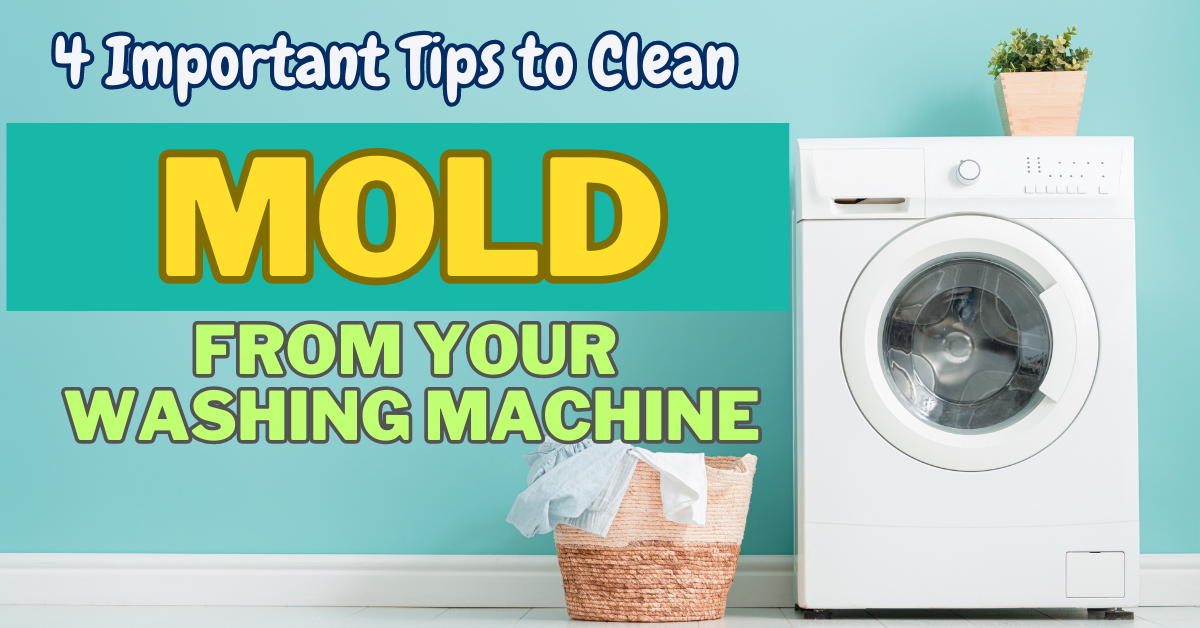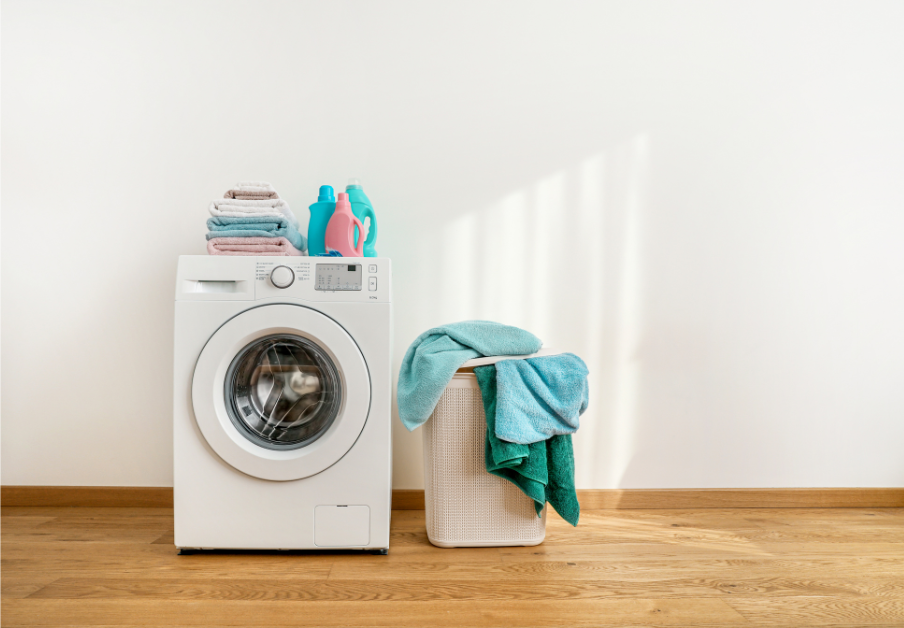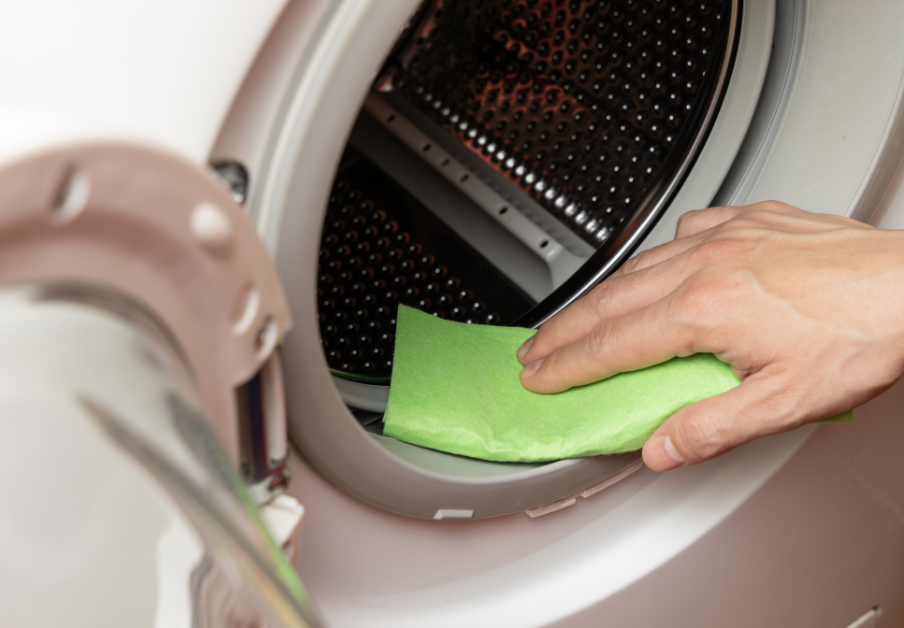 Mold is a common issue in washing machines, despite being a necessary appliance for cleaning clothes, curtains, bedsheets, and stuffed toys. Thankfully, you can easily get rid of mold from your washing machine by following these simple steps. Washing machines are essential appliances used in homes for cleaning various fabric items like clothes, curtains, bedsheets, and even stuffed toys. Unfortunately, they often become a breeding ground for mold. The good news is that you can easily remove mold from your washing machine by following these straightforward steps.
Mold is a common issue in washing machines, despite being a necessary appliance for cleaning clothes, curtains, bedsheets, and stuffed toys. Thankfully, you can easily get rid of mold from your washing machine by following these simple steps. Washing machines are essential appliances used in homes for cleaning various fabric items like clothes, curtains, bedsheets, and even stuffed toys. Unfortunately, they often become a breeding ground for mold. The good news is that you can easily remove mold from your washing machine by following these straightforward steps.
Front loaders are more efficient and eco-friendly than top-loading washers, making them more suitable in your laundry room. But front loaders are more vulnerable to mold development. Front loaders’ waterproof style prevents moist residue inside the washer from getting out. Thus, front-loading washers become mold’s ideal nest.
Owners do not often perceive the actual mold growth. The initial indication of a mold problem in their loading washers is a musty odor.
Mold from Your Washing Machine – How Does It Grow?

The front loader’s door seal consists of a rubber gasket. It holds moisture inside and creates an appropriate breeding ground for mold. On the contrary, air flow in top loaders goes well because they do not shut tightly, which prevents moisture increase that leads to mold growth.
Mold feeds on the remaining components from fabric softeners and liquid detergent. If you suppose that cold-water washes can eliminate mold, then you are incorrect. Nevertheless, with consistent maintenance, you can protect your washer from the infiltration of mold spores.
Tips to Remove Mold From Your Washing Machine
A mold cleaner can kill mold from your washer. But if you like better to formulate a mold-removal mixture, you may pick from the following choices:
- In two cups of water, pour 1/4 cup lemon juice and half a cup hydrogen peroxide. These two powerful cleaners are effective in preventing mold from generating.
- Merge half a cup of white vinegar and 1/4 cup of lemon juice into two cups of water. White vinegar is one of the household’s all-purpose cleaners. You can use it as a substitute for hydrogen peroxide in your home.
- Blend 1 part vinegar with four parts water. If the mold spots in the loading washer’s door gasket are few, water and white vinegar can do the job generally.
- Merge 1 part of bleach with four parts of water. You can use bleach if the above-mentioned DIY cleaning mixtures do not do the trick.
Below are the tried-and-true steps to eliminate mold from your washer:
#1: The first step is protecting yourself by wearing rubber gloves, a dust mask, and goggles.
#2: Clean your washer’s door gasket using your preferred mold-removal solution. Pour some mixture into a spray bottle, then spray directly onto the mold patches. Allow it to stay for a few moments before rubbing it away with a rag or towel.
Be sure to clean the entire rubber gasket and even underneath it.
#3: Detach the dispensers and wash them appropriately to clear out all leftovers that can be mold’s food sources.
#4: Run a cycle in your washer. Ensure it is the hottest and most extended. Add your selected mold cleanser (a cup of bleach, a cup of baking soda, or half a cup of enzymatic cleaner) directly into the water. This method removes mold smells and stains from your unit’s drum and hoses.
You may have to do the steps mentioned above again and again if you have not washed your unit for many months. However, if a musty smell continues, you may need to contact your washer’s maker (if your appliance is still under warranty) or a mold remediation specialist. They can inspect your loading washer and clean mold issues for you.
How to Prevent Mold Growth in Your Washing Machine

- Boost airflow in the washer. After each wash cycle, leave the unit’s door open to allow the air to circulate inside. This action hinders moisture accumulation in the machine. If you have fur babies or little kids in the home, ensure they do not get inside to avoid undesirable accidents.
- Remove your damp clothes instantly. If you cast a load of laundry in the washer, remove them immediately once the timer stops. This method halts moisture accumulation and mold growth. It also keeps your clothes and other fabrics from getting mold contamination.
- Pick a suitable detergent and the proper amount. Using high-efficiency (HE) washing detergent is best instead of an ordinary liquid cleanser. An HE detergent does not create as many foams or bubbles as a regular liquid detergent. Powder detergent is better to use. Stick to the recommended amount for your laundry sizes.
- Avoid using liquid fabric softeners as much as possible. Fabric softeners leave some leftovers in the washer, which may lead to mold generation. Dryer sheets or reusable dryer balls are excellent alternatives to soften fabric items.
- Routinely dry the door gaskets. Pat dry the lid, rubber gaskets, dispensers, and drum using a clean rag or towel. Then leave the door half open to air dry them. Remember to do it after every use to inhibit moisture buildup that invites mold to grow and flourish.
- Run a bleach or white vinegar cleaning cycle. Run a hot-water cycle with a cup of vinegar or bleach in your washer. Do it once a month. This method will get rid of any growth that may have already begun.
- Dehumidifier. Place a quality dehumidifier in your laundry area to control the humidity volume, especially if the room is humid.
Superior Restoration is Willing to Assist
Indeed, mold contamination in the home is troublesome, specifically if you see them thriving in your loading washer. If the mold-removal task is too much of a headache for you, do not hesitate to reach out to Superior Restoration’s team of highly-skilled specialists.
Mold prospers in damp areas. So our experts use safe but powerful cleaning solutions to rigorously eradicate mold spores and repair damaged surfaces.
Our professionals are ready to aid you 24/7. Feel free to get in touch with us today to know more about our company’s services.




